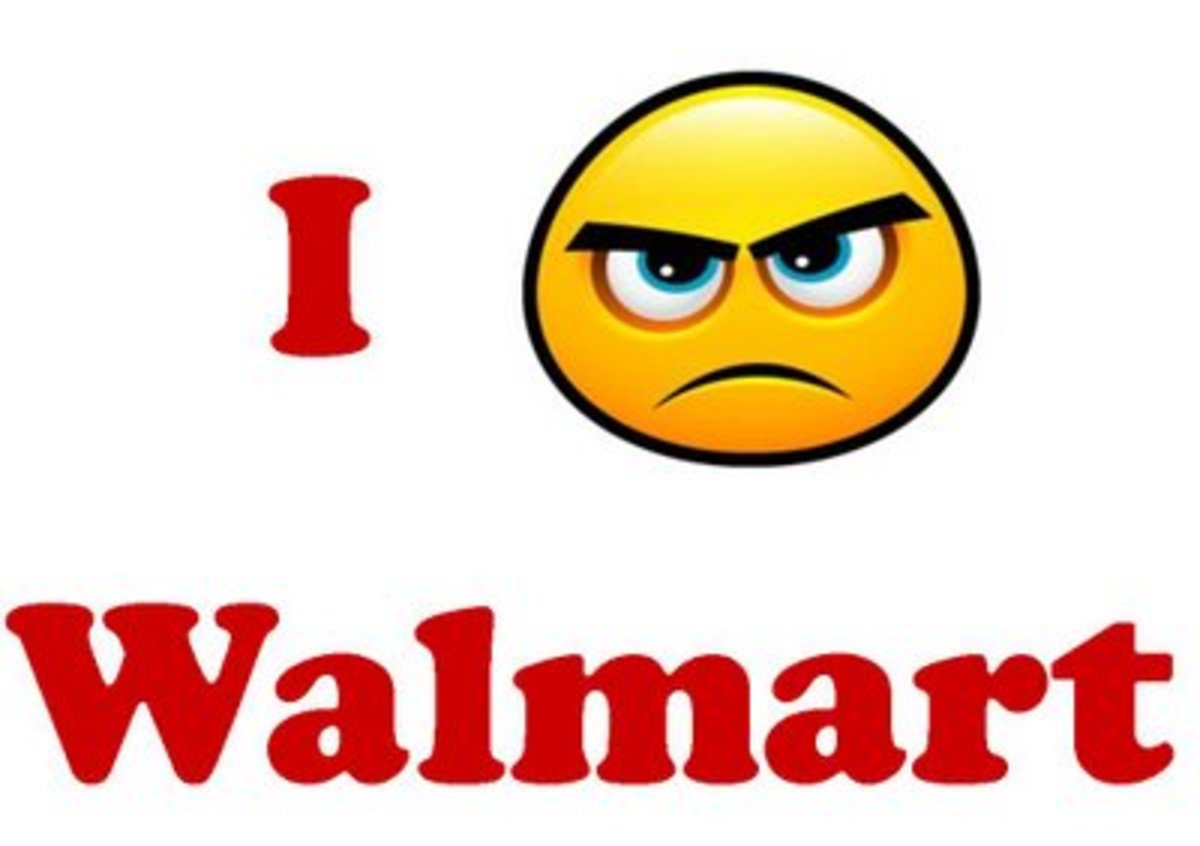Wal-Mart’s Impact on U.S. Economy
The world’s largest corporation, Wal-Mart has become the poster child for globalization by exchanging products internationally during its expansion. Apart from $485.65 billion annual revenue in 2015, the company owns 6,100 stores in 15 countries and employs 1.4 million workers. However, Wal-Mart’s low price policy has had some adverse effects on the country. Their prices have driven small businesses to bankruptcy while simultaneously lowering the wage for the average worker. They accomplished this, by replacing domestic products with imported goods purchased in bulk. Despite these shortcomings, the strengths of Wal-Mart overshadow the weaknesses in regards to its impact on the U.S. economy and customers.
Wal-Mart Solves Employment Problems
In The U.S. alone, Wal-Mart owns and operates over 3,600 domestic stores, which employ a large number of diverse workers with a great variety of skillsets. These can include drivers, chefs, cashiers, stockers, sales, technicians, accountants, pharmacists, and many others. The estimated employee count is over 1.2 million workers, which contributes 1 percent of the U.S. workforce and 10 percent of overall retail employment. With low job prerequisites for most positions, many without higher education backgrounds are relieved to find they can depend on the company for short or long term employment.
Is Wal-Mart good for America?
However, in order to retain their famously low prices workers are often paid the minimum wage required by state law. Lower wages are ubiquitously expected for those without strong education backgrounds. A well educated populous is an enriched populous and Walmart, having made small retail businesses obsolete, has forced people to attend college in order to provide themselves with a livable income.
About 85% of the merchandise is manufactured overseas and the cheap prices are blamed for the destruction of manufacturing jobs in the United States. Statistics from a recent report revealed that local businesses did indeed suffer a financial loss after Wal-Mart moved into the area:
A study of small and rural towns in Iowa showed lost sales for local businesses ranging from -17.2% in small towns to -61.4% in rural areas, amounting to a total dollar loss of $2.46 BILLION over a 13-year period.
People always complain about the local manufacturing jobs loss after big companies move their factories to developing countries. However, globalization is an unstoppable trend and people have to accept the fact that profits are the primary concerns of a corporation and not necessarily the well being of their employees. Customers want to save money by purchasing goods from Wal-Mart and Wal-Mart has done what it must to meet that demand by hiring cheap labor in developing countries or using imported materials. Therefore, costumers are those who benefit the most.
Playing Nice with Others
Wal-Mart has become the largest supply chain in the world and its success has influenced the way other retailers operate. One key source to this success is an insistence on keeping their shelves fully stocked at all times. Manufacturers from all over the world store their goods in Wal-Mart distribution centers and have their goods transported to its retail stores.
Walmart’s market power is so immense that the even the largest suppliers must comply with its demands for lower prices because they cannot afford to have their goods taken off Walmart shelves. Companies that used to manufacture products in the United States, such as Levi’s Jeans or lock maker Master Lock, were pressured to shutdown their U.S. factories and moved manufacturing abroad to meet Walmart’s demand for low prices.
Other than its influence on Americans’ lifestyle, Wal-Mart has impacts on other suppliers. It is a fact that manufacturers were forced to move out of the country and workers were replaced by cheap labor in the developing countries. Many job opportunities were lost because manufacturers shut down or small business went bankrupted. Meanwhile Wal-Mart, being a fairly large corporation, needed to hire those same people and more as its business expanded over U.S. territory. Jobs were created and people can dependably find work at Walmart all throughout the country.
Staying Green to Make Green
As the largest retailer in the world, Wal-Mart has understandably led by example and promotes environmental sustainability. In order to reduce its net influence on nature and retain environmental sustainability Wal-Mart uses renewable energy, cuts down on waste, and sells products that help the ecosystem. Wal-Mart follows the Four R’s of sustainability—reduce, reuse, recycle, and rethink. By the end of 2013, Wal-Mart reduced plastic waste by 38% and reduced total weight of trays by 25.5%. In addition, Wal-mart uses electronic recycling as an additional method to protect the environment. For example, Wal-Mart has a smartphone and tablet trade-in program. Rather than simply throw obsolete technology away, customers can give Walmart their unwanted devices in return for store credit. Also, Wal-Mart guarantees to only sell sustainable food and manufactured products. By doing so, Wal-Mart has reduced food waste and optimized farmer’s benefits by producing more food with fewer food suppliers. In regards to manufactured goods, Wal-Mart tries to use recycled material or packaging optimization to reduce potential waste whenever it can.
In conclusion, Wal-Mart has had a huge but positive impact on both the U.S. economy and citizens as a whole.
Works Cited
Ciment, James, and Roger Chapman. Culture Wars in America: An Encyclopedia of Issues, Viewpoint, and Voices, Routledge, 2015.
“Walmart’s Impact on America.” Economy in Crisis: America’s Economic Report, July 05, 2012.
“Sustainability.” Wal-Mart Stores, Inc., 2016.





